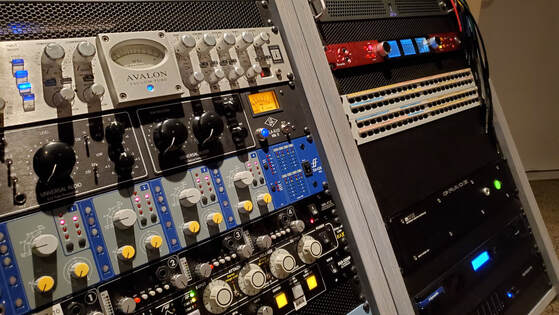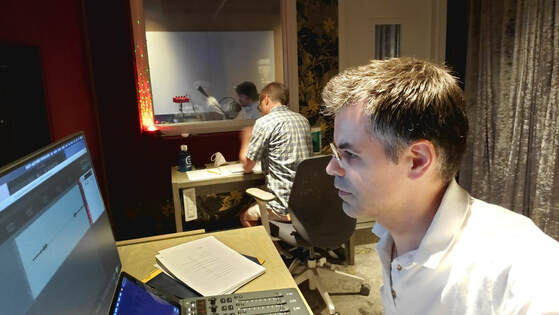|
As we’ve mentioned once or twice before, Marc and I are transplants from an adjacent storytelling art form. We worked for years in the professional theatre, and recognize the power of the spoken word. For months now Marc has been hammering out the script for HRO, and we’re finally (finally!) in the process of working with actors and recording the voice-over. For folks like us, it’s a real treat. How the characters appear on screen is very important, but their voices provide essential in-roads for audiences to connect to characters. Giving characters a literal voice strengthens the experience and provides authenticity to the environment. Many of us have heard that old adage “it’s not what you say, it’s how you say it,” and that’s especially true for voice acting. A well-delivered line can provide insight into the character’s state of mind or emotional circumstancea. Voices can help communicate information quickly and efficiently and — as we discussed on our previous blog post about P.A.L. — voice is a great tool to efficiently move plot forward. Unfortunately, it’s beyond the scope of HRO for every single line of text in the game to be recorded. There’s *so* much conversation in HRO that to voice every single line would have increased the budget and workload exponentially. Additionally, we love the flexible nature of INK and the tools it provides to change dialogue dynamically during the development process, but this also makes it impractical to voice *everything.* So we chose to limit the VO to the cinematic cut-scenes (which still left us with a 97 page script…) Voice-over can be hard to do well, especially because of the non-linear nature of most games. Iterations are crucial. Voice actors might need to record the same line several different ways depending on context. For example, a single line of dialogue might need to be delivered differently if an element of plot plays out to more than one conclusion, or if the character is potentially engaged in a different action when that same line is heard. Creating active dialogue is often an overlooked step in the process. It’s important to ensure that no line is simply information being delivered, but is also a communicator (subtle or otherwise) of motivation or emotional state between two characters. In each line, characters need to be actively doing something that’s expressed vocally. If you can’t identify what the actor is doing with their delivery, they’re probably not giving you an active performance. Well-executed voice-over can bring a constructed universe to life, and the ability to recognize and nurture a strong voice-over performance should be something every game dev aspires to have in their toolbox.
0 Comments
Leave a Reply. |
AUTHORWorthing and Moncrieff, LLC is an independent developer of video game stories founded in 2015. ARCHIVES
December 2022
|



 RSS Feed
RSS Feed
